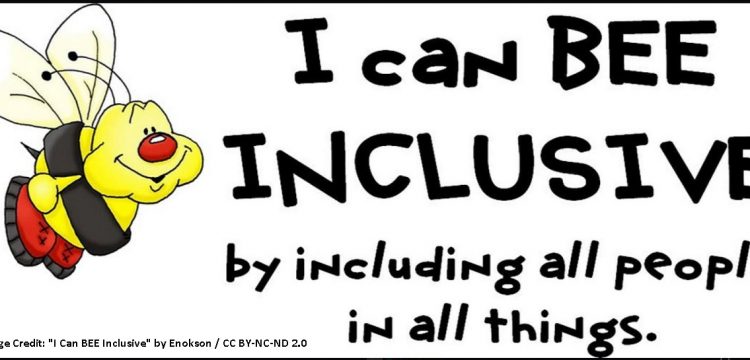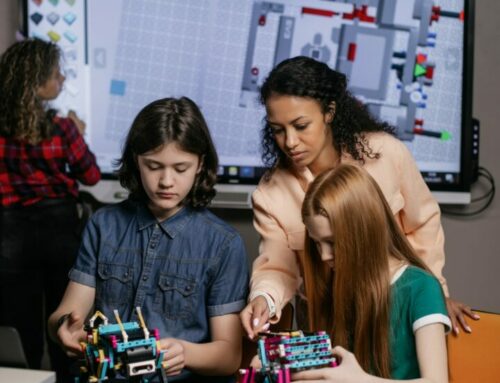Towards a more equal, inclusive higher education
Patrick Blessinger, Jaimie Hoffman and Mandla Makhanya
St John’s University (NYC), University of Wisconsin at La Crosse, University of South Africa
Widening participation initiatives aim to improve access to higher education opportunities for all people. Driven by increased demand for education from all segments of society as well as legal reforms and human rights declarations, these initiatives focus on improving access for students from historically marginalised backgrounds (for example, ethnic minorities, students with disabilities and students from low-income backgrounds) to address inequities and inequalities in higher education.
Thus, the heart of widening participation policies revolves around making access to education more fair and equal. To that end, equity and inclusion initiatives aim to address and redress longstanding practices of exclusion and privilege (typically along race, ethnicity, sex, gender and socio-economic class lines) which have tended to stratify society.
Each society or institution of higher education is unique and has different historical contexts and cultures. Each institution must determine how best to achieve the twin goals of equity and inclusion. We, along with other international equity and inclusion scholars, discuss these issues in the forthcoming book series, International Perspectives on Equity and Inclusion.
Defining inclusion in education
The term inclusion is a multi-faceted term with several layers of meaning. It can also be used in different ways depending on the context in which the word is used. Very broadly defined in general usage, social and cultural inclusion means the practice of including all people. It is contrasted with practices that exclude, segregate and privilege one group over another – attitudes that foster these practices include racism, sexism, heterosexism, elitism and supremacism, among others.
Inclusion in education takes on a more specific meaning. In the United States, for example, inclusion involves students’ human and civil rights to participate fully in all aspects of the educational process, regardless of any disabilities they may have.
Concomitantly, schools have a legal and moral obligation to give students with disabilities a high-quality education that is tailored to their specific learning needs. In the US, the IDEA law covers these rights and obligations at the primary and secondary education levels, for instance.
At a human rights level, several related treaties and conventions govern inclusion in education (at all levels), such as the Convention against Discrimination in Education and the Convention on the Rights of Persons with Disabilities.
In addition, UNESCO defines inclusion as “…a process of addressing and responding to the diversity of needs of all children, youth and adults through increasing participation in learning, cultures and communities, and reducing and eliminating exclusion within and from education”.
Thus, UNESCO defines inclusion broadly to include all marginalised groups, including groups defined by race, ethnicity, sex, gender, socio-economic class, sexual orientation, language, religion, ability and immigrant status, among other characteristics. Furthermore, UNESCO explains that “…inequity of education quality and of effective learning amounts to unequal development”.
Fairness in higher education
Fair access to higher education requires both equality and equity, two principles that are complementary, but they frame the idea of fairness differently. Equality is based on the fairness principle that every individual is entitled to uniform opportunity to access and participate in higher education. In broad terms, uniform treatment means that everyone is entitled to equal treatment under the law without discrimination.
Equity is based on the fairness principle that every individual is entitled to just opportunity to access and participate in higher education. In broad terms, just treatment means that everyone has a human right to access and participate in higher education as a matter of social justice as described in the United Nations’ Universal Declaration of Human Rights.
Equity entails understanding student learning needs. Since not everyone has the same needs and circumstances, equity-related policies call for providing students with additional assistance and-or appropriate accommodations to make the playing field fairer. The goal is to lessen and ultimately remove obstacles to achieving academic success that may result from one’s personal and social circumstances.
Therefore, equity policies and practices help institutions achieve greater inclusion in education. An inclusion strategy, supported by advances in educational technology, engaged learning strategies and a human rights approach to education, involves cultivating educational integration through meaningful academic and social interactions among all students.
Inclusion is a core democratic principle
Inclusion in education is rooted deeply in the democratic principles of justice and equal opportunity. Inclusive higher education is vital to the ongoing development of a democratic society. At the heart of inclusive education is the cultivation of a mindset that supports growth and respects human differences.
In an increasingly globalised world characterised by pluralism and interconnectedness, inclusive education serves as an indispensable characteristic of modern learning. Consequently, inclusion involves modernising the provision of instruction, curricula, co-curricula, learning environments, assessment and learning outcomes to meet contemporary learning needs.
The great challenge before higher education leaders and policy-makers therefore is to foster social justice without compromising academic quality and professional relevance.
This challenge includes putting in place policies, strategies and practices that support high-quality teaching and learning and creating a culture of inclusion throughout the entire learning environment. Institutions must seek to achieve inclusive excellence – whereby inclusion and excellence are approached as interdependent.
Democratising higher education
In higher education, inclusion has come to mean the equal and equitable treatment for all people. The closely related term of diversity has come to mean that a diverse learning environment can provide many benefits as a result of different abilities, strengths, perspectives, etc. Thus, inclusive practices foster more diverse educational environments.
Promoting and fostering inclusion means engaging all students in all aspects of the educational process, promoting collaboration and interaction and providing opportunities for all to succeed.
Education is the basic foundation for all political, economic, social and personal development. Each stage in the educational system serves as a building block for that development. Thus, achieving equity and inclusion in education requires a change in mindset and practices that aims to foster inclusion, respect differences and value the contributions of all.
Patrick Blessinger is an adjunct associate professor of education at St John’s University, New York City, USA, and chief research scientist for the International Higher Education Teaching and Learning Association. Jaimie Hoffman is an adjunct professor at University of Wisconsin La Crosse and higher education scholar in California, USA. Mandla Makhanya is principal, vice-chancellor and professor at the University of South Africa.
Suggested Citation:
Blessinger, P., Hoffman, J. & Makhanya, M. (2018). Inclusive higher education for the benefit of all, Higher Education Tomorrow, Volume 5, Article 2, https://www.patrickblessinger.com/towards-a-more-equal-inclusive-higher-education-2
Or
Blessinger, P., Hoffman, J. & Makhanya, M. (2018). Inclusive higher education for the benefit of all, University World News, http://www.universityworldnews.com/article.php?story=20180306102731111
Copyright © [2018] Patrick Blessinger, Jaimie Hoffman and Mandla Makhanya
Disclaimer
Opinions expressed in this article are those of the author, and as such do not necessarily represent the position(s) of other professionals or any institution.




